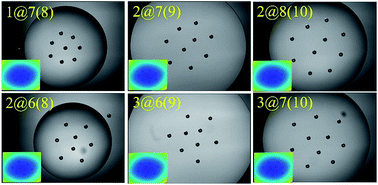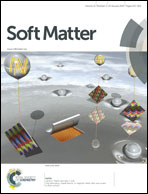Effect of interaction heterogeneity on colloidal arrangements at a curved oil–water interface
Abstract
We report the unique arrangement behaviour of colloidal particles at a curved oil–water interface. Particles trapped at a centrosymmetrically curved oil–water interface, formed by placing an oil lens at a neat air–water interface, organize into diverse arrangement structures due to electrostatic repulsion under the gravitational field. To reveal a possible mechanism behind the observed diversity, we investigate the interactions between pairs of particles at the curved oil–water interface. The magnitude of electrostatic repulsive interactions between pairs of particles is determined by minimizing the total potential of the particle pairs. We show that the pair interactions are quite heterogeneous, following a Gamma distribution. Using the experimentally determined pair potential and the heterogeneity in the potential as input parameters for Monte Carlo simulations, we show that such interaction heterogeneity affects the particle arrangements at the curved interface and results in an observed diversity in the particle arrangement structures. We believe that this work prompts further experimental and simulation studies to extensively understand hierarchical relations from small scale measurements (e.g., pair interactions and heterogeneity) to bulk scale properties (e.g., microstructure and interfacial rheology).


 Please wait while we load your content...
Please wait while we load your content...